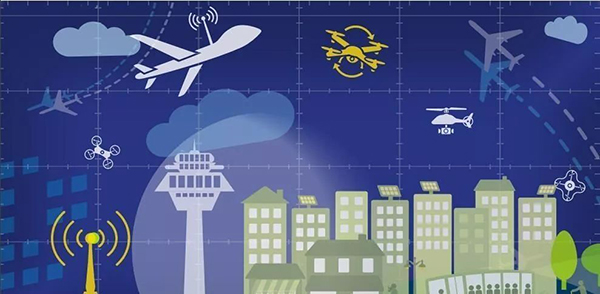Air traffic airspace management refers to the management work that aims to maintain national security, take into account the needs of civil and military aviation and public interests, unify planning, and make reasonable, sufficient, and effective use of airspace.
Specifically, airspace management includes the deployment of national and regional air route networks, optimization of flight routes and procedures, and flexible use of airspace. By sharing airspace or flexibly dividing airspace according to various flight needs to meet the needs of different types of flights, the full utilization of airspace resources can be achieved within the established airspace structure.
The characteristics of airspace management are: from the perspective of the overall airspace, taking into account the needs of civil and military aviation and public interests, unifying rules, and utilizing airspace reasonably, fully, and effectively.
Air traffic control units shall provide air traffic services for civil aircraft in flight, including air traffic control services, flight information services, and warning services. Providing air traffic control services aimed at preventing collisions between civil aircraft and obstacles, maintaining and accelerating orderly air traffic activities. Providing flight information services aimed at providing information and recommendations that contribute to the safe and effective implementation of flights. The air traffic control tower controller provides alarm services, aiming to notify relevant departments when civil aircraft need to search and rescue, and assist the relevant departments in search and rescue as required.
The Basic Flight Rules of the People's Republic of China, revised by the State Council and the Central Military Commission in October 2007, stipulate that the establishment of airspace should take into account national security, flight needs, flight control capabilities, communication, navigation, radar facility construction, airport distribution, environmental protection, and other factors. Airspace is usually divided into airport flight airspace, air routes, air restricted areas, air restricted areas, and air hazardous areas. If necessary for airspace management and flight missions, air corridors, air oil release areas, and temporary flight airspace can be established. Airport flight airspace should be established outside of air routes and air corridors. The boundary of instrument (cloud) flight airspace should be no less than 10 kilometers away from the boundary of air routes, air corridors, and other airspace. Airport flight airspace usually includes driving skills (stunt, formation, instrument) flight airspace, scientific research test flight airspace, shooting flight airspace, low altitude flight airspace, ultra-low altitude flight airspace, sea flight airspace, night flight airspace, and waiting airspace. The waiting airspace is usually designated above the navigation station; Airports with frequent flight activities can be designated in the airspace near the airport. The lowest altitude layer of the waiting airspace must have a true height of no less than 600 meters from the highest obstacle on the ground. Below 8400 meters, every 300 meters is a waiting height level; Between 8400 meters and 8900 meters, there is a waiting height layer every 500 meters; Between 8900 meters and 12500 meters, there is a waiting height layer every 300 meters; Above 12500 meters, there is a waiting level every 600 meters. The plan for the establishment of airport flight airspace shall be put forward by the aviation unit stationed at the airport and submitted to the aviation unit at the military level of the Chinese People's Liberation Army or the air force of the military region for approval. The flight airspace between adjacent airports can be adjusted and used interchangeably The establishment and adjustment of airspace shall be subject to approval and filing procedures in accordance with relevant national regulations. The airspace over military locations, weapon testing grounds, aviation units, flight schools and other aviation units located near air routes and routes may be designated as airspace restricted areas. Temporary airspace restricted areas may also be designated over other areas as needed. Within the prescribed time limit, aircraft without permission from the flight control department shall not fly into the airspace restricted areas or temporary airspace restricted areas. The establishment of temporary airspace shall be proposed by the aviation unit applying to use the airspace, designated by the relevant flight control department, and notified to the relevant units. The airspace between the national (border) line and our side within 10 kilometers is prohibited from being designated as temporary airspace restricted areas. Flight airspace. When there is a special need for general aviation flight, it shall be designated by the relevant flight control department after approval by the local military region.
Air Traffic Flow Management (ATFM) is a service designed to facilitate the safe, orderly, and efficient flow of air traffic, ensuring maximum utilization of the capacity of air traffic control services and compliance with the standards and capacities announced by relevant air traffic service authorities. [1] The main purpose of air traffic flow management is to provide services for air traffic safety, orderliness, and acceleration of flow during periods of demand and expected demand exceeding the available capacity of the air traffic control (ATC) system, ensuring maximum utilization of ATC capacity, ensuring the optimal flow or passage of air traffic through these areas, and providing timely and accurate information for aircraft operators to plan and implement an economical air transport, in order to forecast flight information as accurately as possible and reduce delays.


